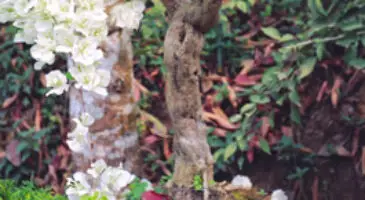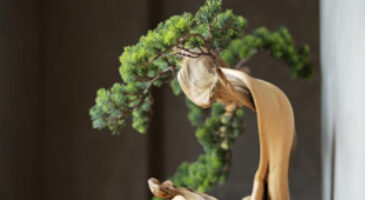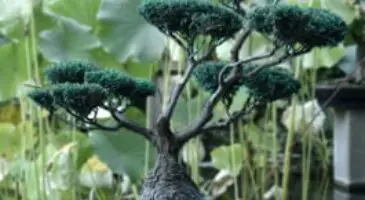Table of Contents
Wiring is a design technique in the Bonsai tradition that allows Bonsai keepers to give their trees the desired shape. This allows wiring to some extent able, to influence both the shape and the overall growth of the tree.
The method involves a simple technique of wrapping wires around the tree branches, trunk, or shoot to make it easier for planters to bend them in the desired direction.
However, even though, in theory, wiring may seem like a simple process, it can be quite difficult in practice, which is why questions like, do you have to wire a Bonsai tree?
Normally pop up in most search engine history. At the end of this article, you should be able to know whether the wiring is important for Bonsai or if it is a process that can be avoided.
Do I have to wire my Bonsai?
Yes, you have to wire your Bonsai tree. Although the wiring is not a necessary process in Bonsai, it plays a critical role in helping to achieve the true essence of the Bonsai tradition. Apart from the main goal of giving trees stunted growth, Bonsai trees are also quite popular for the artistic impression they create.
So to bring the ambience of a true Bonsai practitioner into your work, you have to consider wiring your tree. While pruning will help you achieve the stunted growth you desire, the wiring will help give your project an artistic impression.
How to wire the Bonsai tree?
Wiring a Bonsai tree can be quite tricky, hence the reason why one must master the art before trying to practice the process. There are two ways to wire a Bonsai tree: the double and the single wiring techniques.
During the wiring process, if you notice any two branches with similar thickness and near each other, you can join both branches with one piece of wire for a double wiring, double wiring technique.
You can practice the single wiring technique on other branches by using one piece of wire to wrap each branch separately. Make sure that every branch that will be shaped is all wired before you eventually bend them.
And also, if you are going to wire the whole Bonsai tree, make your way from the tree trunk down to the primary branches before you begin to work on the secondary branches. Lastly, make sure the wire you are using is strong enough to support the branches in the new direction you are positioning them.
When should you wire a Bonsai tree?
Fortunately, you can wire most of the Bonsai tree species at any preferred time of the year except deciduous trees, as they are easier to wire during winter because they usually have fewer leaves on them during this period.
In general, during the growing seasons of Bonsai trees, the wiring should be done with utmost care as branches tend to grow faster during this time. If care is not taken, the wire can cut through the bark and leave ugly scars on them.
What wire do you use for a Bonsai tree?
Majorly there are two types of wire you can use for your Bonsai tree: annealed copper and anodized aluminium. When you are wiring a deciduous tree, the best wire to use is aluminium wire. As for conifers and pines, the best wire to use is the anodized copper wire.
What is the purpose of wiring a Bonsai?
The major reason for wiring a Bonsai is styling and training. Wrapping the branches of your Bonsai tree with wire will make it easier for you to bend and reposition them in whatever direction you want. Essentially, wiring gives Bonsai trees artistic appeal and character.
How long do Bonsai need to be wired?
You can leave the wire on your tree for about 1 to 4 months, depending on how fast they grow. Within this period, you may notice the growth of branches around the wires because the wires won’t stop your tree from growing. If care is not taken, this rapid growth can lead to damaged barks that may leave permanent scars on your tree.
Therefore, it is best to remove the wires once you notice a new growth or your tree branches are growing thicker before they start piercing into your tree bark. Cut the wires at every turn to make it easier for you to remove them.
How to trim a Bonsai tree for the first time?
Pruning a Bonsai for the first time is pretty easy because they are still very young at this stage and barely have leaves on them. To trim, place the tree gently on a raised surface, making sure they are at eye-level with you. After this, remove all dead branches. Do this until you achieve your intended Bonsai design.
How long do Bonsai trees live?
If a Bonsai is properly raised under the right condition, it can live for over 100 years. However, it is believed that the oldest Bonsai tree in the world is the Fiscus Bonsai tree. This tree lived for over a thousand years, and that should give you a clue of how long a Bonsai tree can live.
What can I use for Bonsai wire?
You can use either annealed copper or Anodized aluminium for your Bonsai wiring. If you don’t know much about this process, Anodized aluminium is the best option for you.
Which wire size do you use for wiring a Bonsai?
The ideal wire thickness for a Bonsai tree is between 1mm to 6mm.
What should I use instead of Bonsai wire?
If you cannot find any of the two suggested types of wire, you can use any of these alternatives, rubber band, jute rope, yarn, and bamboo.
How do you tie down a Bonsai tree?
You can tie a bonsai tree and wrap the wire gently around the base of the trunk or the branch while twirling the rest of the wire along the height of the branch.



